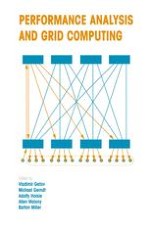Past and current research in computer performance analysis has focused primarily on dedicated parallel machines. However, future applications in the area of high-performance computing will not only use individual parallel systems but a large set of networked resources. This scenario of computational and data Grids is attracting a great deal of attention from both computer and computational scientists. In addition to the inherent complexity of parallel machines, the sharing and transparency of the available resources introduces new challenges on performance analysis, techniques, and systems. In order to meet those challenges, a multi-disciplinary approach to the multi-faceted problems of performance is required. New degrees of freedom will come into play with a direct impact on the performance of Grid computing, including wide-area network performance, quality-of-service (QoS), heterogeneity, and middleware systems, to mention only a few.
